Delhi’s Shahjahanabad was first founded as an empire’s capital at the glorious height of the Mughal dynasty; from this vantage point, it was also witness to the empire’s decline and eventual extinction. The city would transform profoundly in the aftermath of the Revolt of 1857, with many of its neighbourhoods and buildings obliterated, and many of its inhabitants, including the last Mughal emperor, Bahadur Shah Zafar, having left, never to return. Fortunately, a mapmaker, working in 1846, painstakingly depicted important buildings, streets, and landmarks, providing a wealth of information about the city as it had evolved up to that time.
With a pull-out map included in the book, this is a must-have for anyone interested in cartography and Delhi’s vibrant cultural history. We present a photo essay from Swapna Liddle‘s latest book.
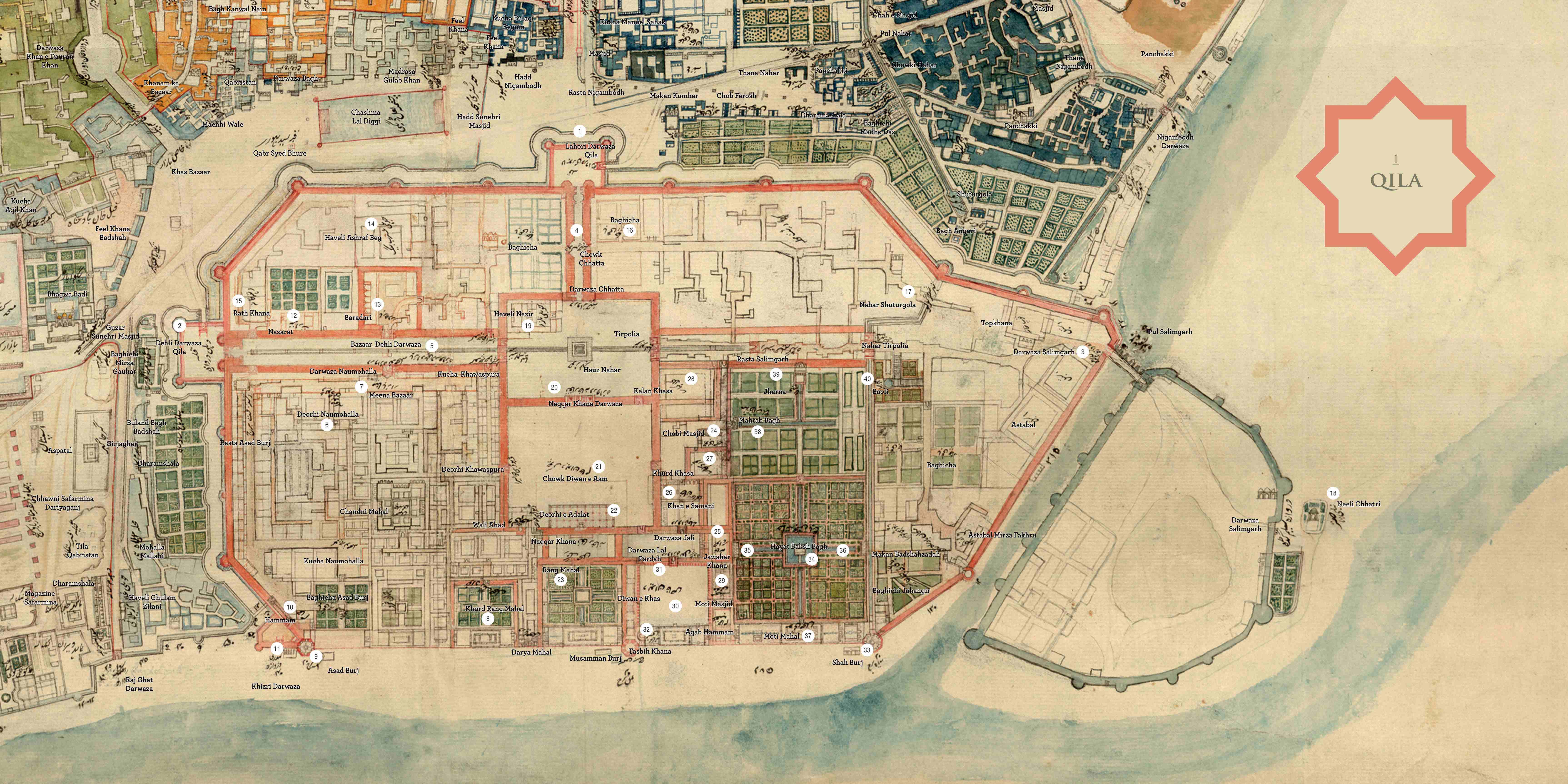
Qila
The citadel, referred to as Qila on the map, stands out prominently with its red enclosing walls clearly depicted. This is what we know today as Red Fort, though its formal name was Qila-e-Moalla, ‘the exalted fortress’. This was in a way the focal point of the new city of Shahjahanabad.
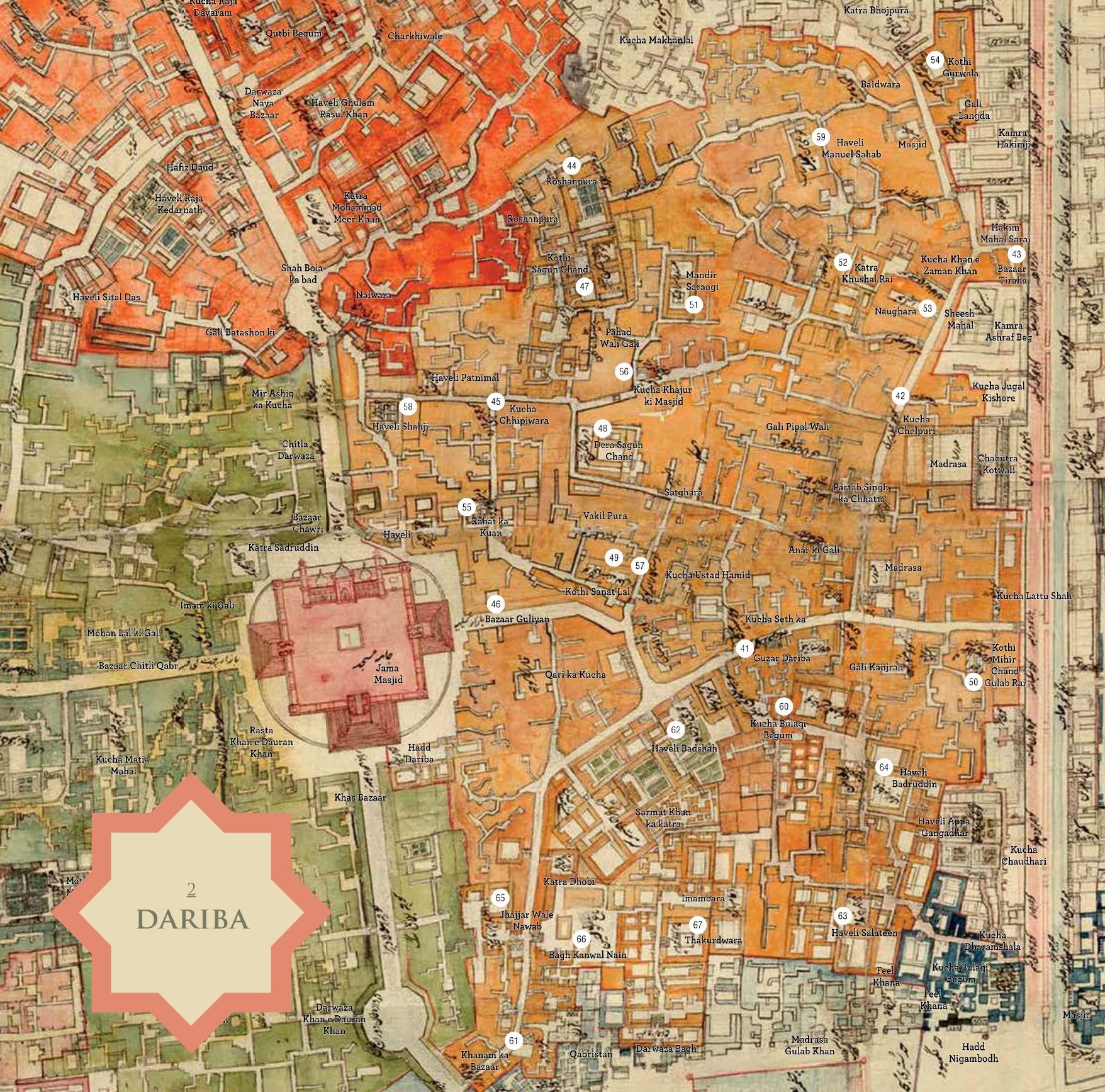
Dariba
The jurisdiction of this thana is marked out in orange, spreading north of Jama Masjid. An important landmark is the long street labelled Bazaar Dariba/Guzar Dariba (41), after which the thana is named. Though the map does not say so, Dariba was also called Dariba Kalan (‘big Dariba’) and a street going off it, to the west, was called Dariba Khurd.
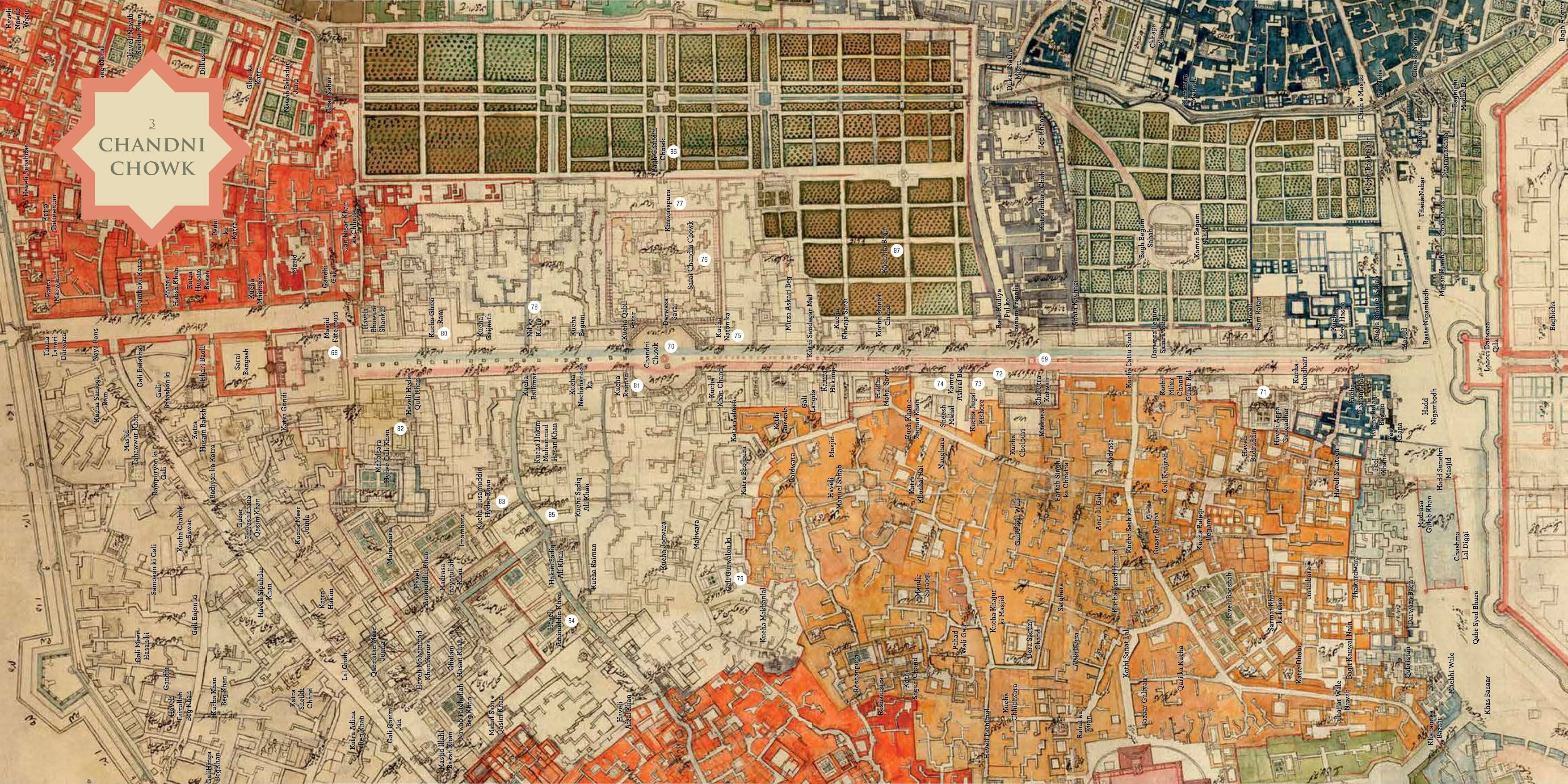
Chandni Chowk
The Chandni Chowk thana is the most spread out of all the thanas of the city. Its limits include the most important street of the city, running from the Lahori Darwaza of the Qila, to Fatehpuri Masjid (68) at its western end. It is interesting to note, however, that the thana limits actually exclude a short stretch at the extreme eastern end of the street.
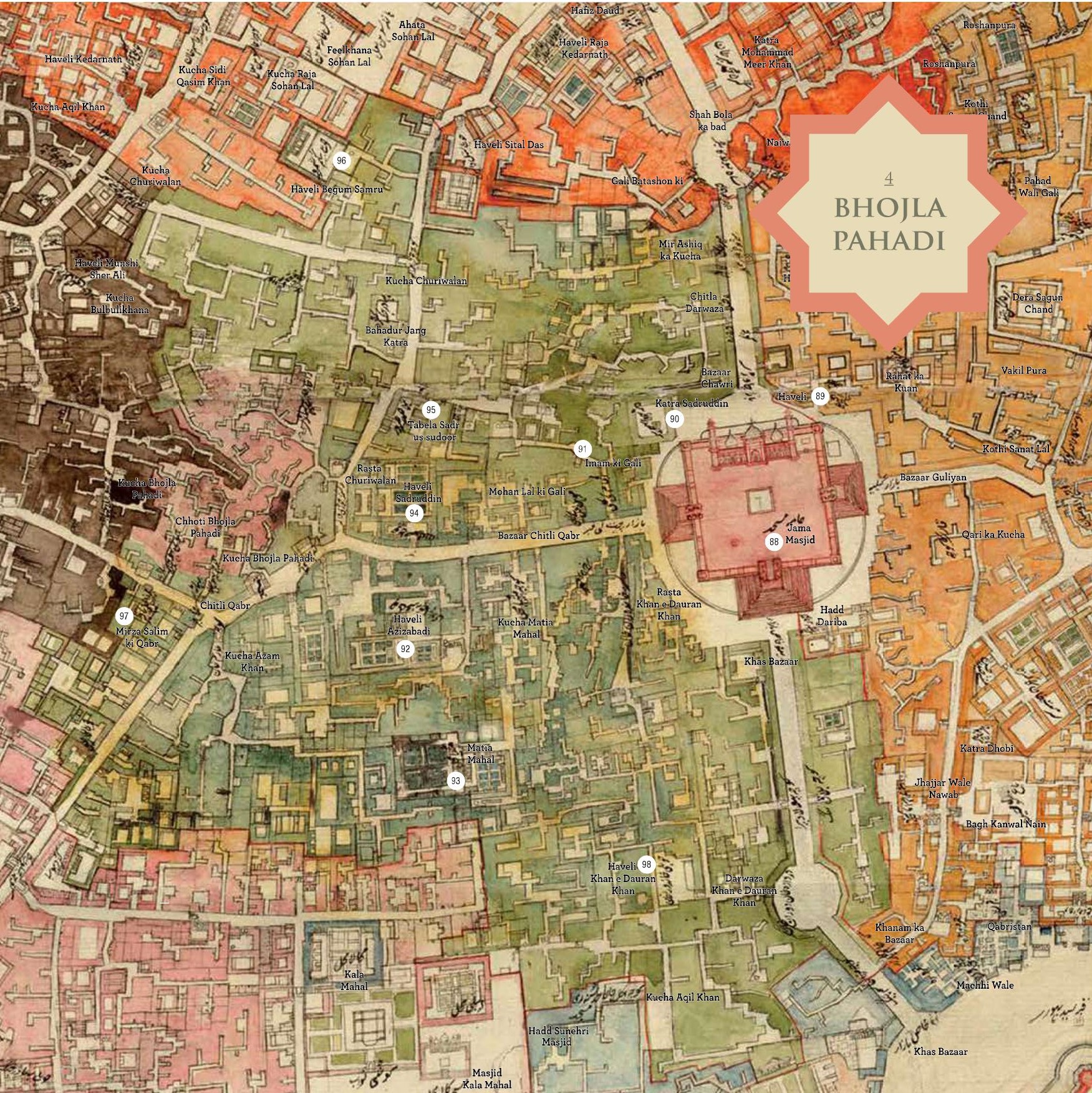
Bhojla Pahadi
The area stretching south of the Jama Masjid is coloured in green, and marked in the 1858 plan as Bhojla Pahadi. The most prominent landmark within this thana limit is the Jama Masjid (88), drawn in beautiful detail. This mosque had been built as the congregational mosque of the city of Shahjahanabad at the time of its founding, and was located on the highest point in the city.
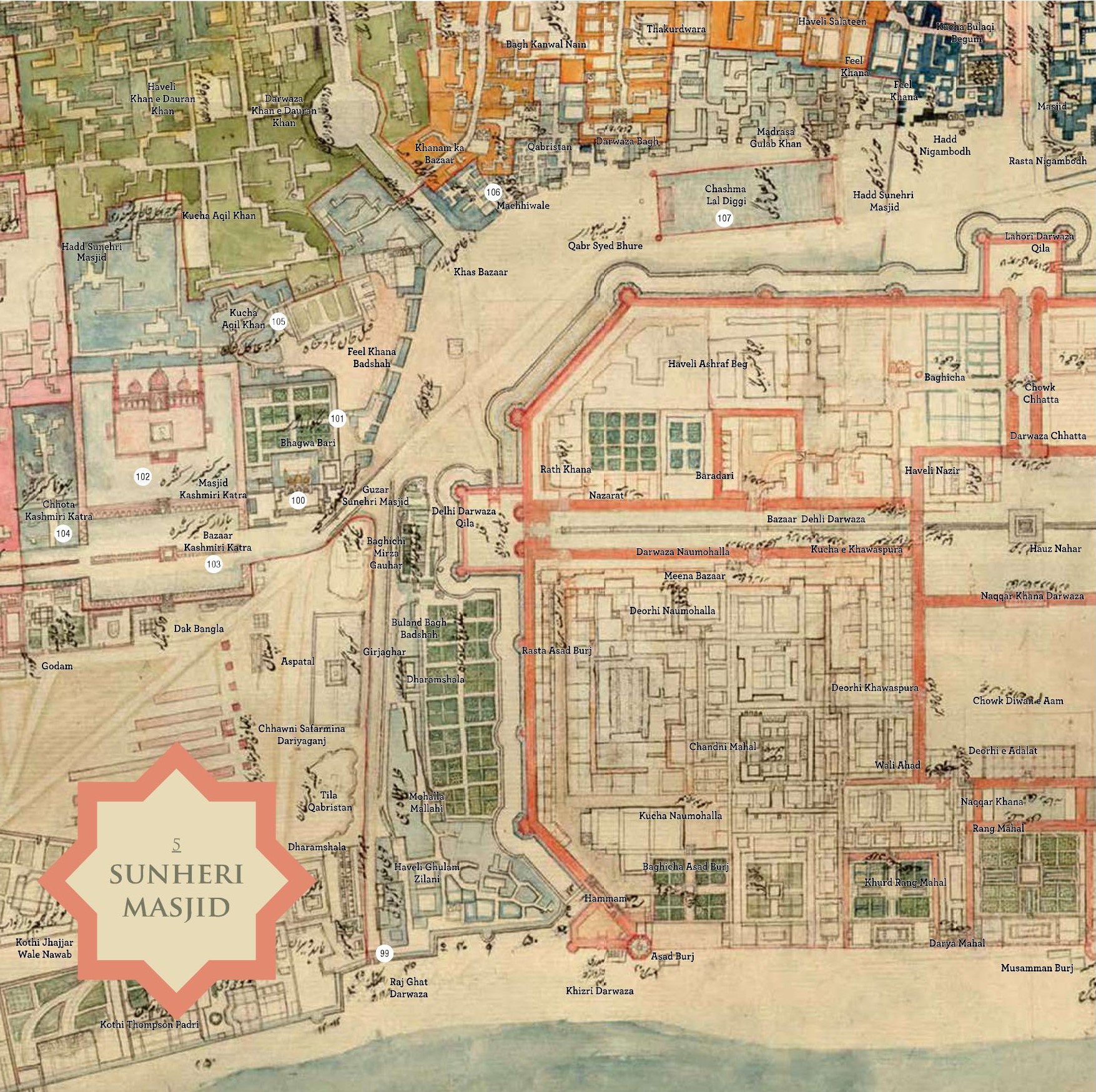
Sunheri Masjid
This is a small jurisdiction of the city, marked at its boundary as Hadd Sunehri Masjid, ‘boundary Sunehri Masjid’, though the 1858 plan refers to this thana as Raj Ghat. The vast majority of the buildings in this part of the city were demolished post-1857, so the map is a valuable source of information for what existed here before the destruction.
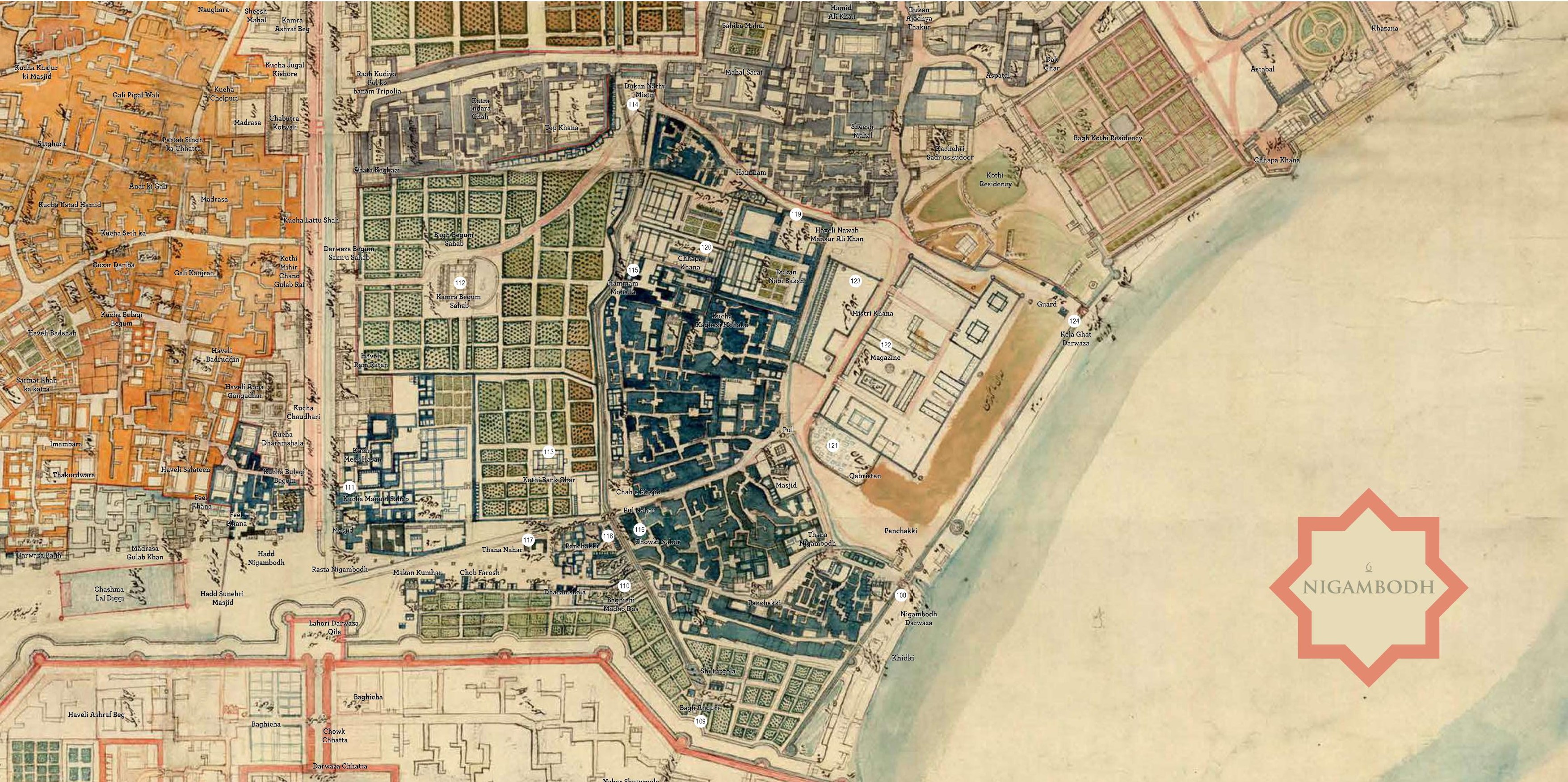
Nigambodh
This thana, coloured in blue, gets its name from a location that predated the founding of Shahjahanabad. Tradition was, that on the bank of the river Yamuna at this location, Indra, the king of the gods, had performed sacrifices, approving of which, Lord Vishnu had blessed the spot and called it ‘Nigambodhak’ – that which bestows a knowledge of the Vedas.
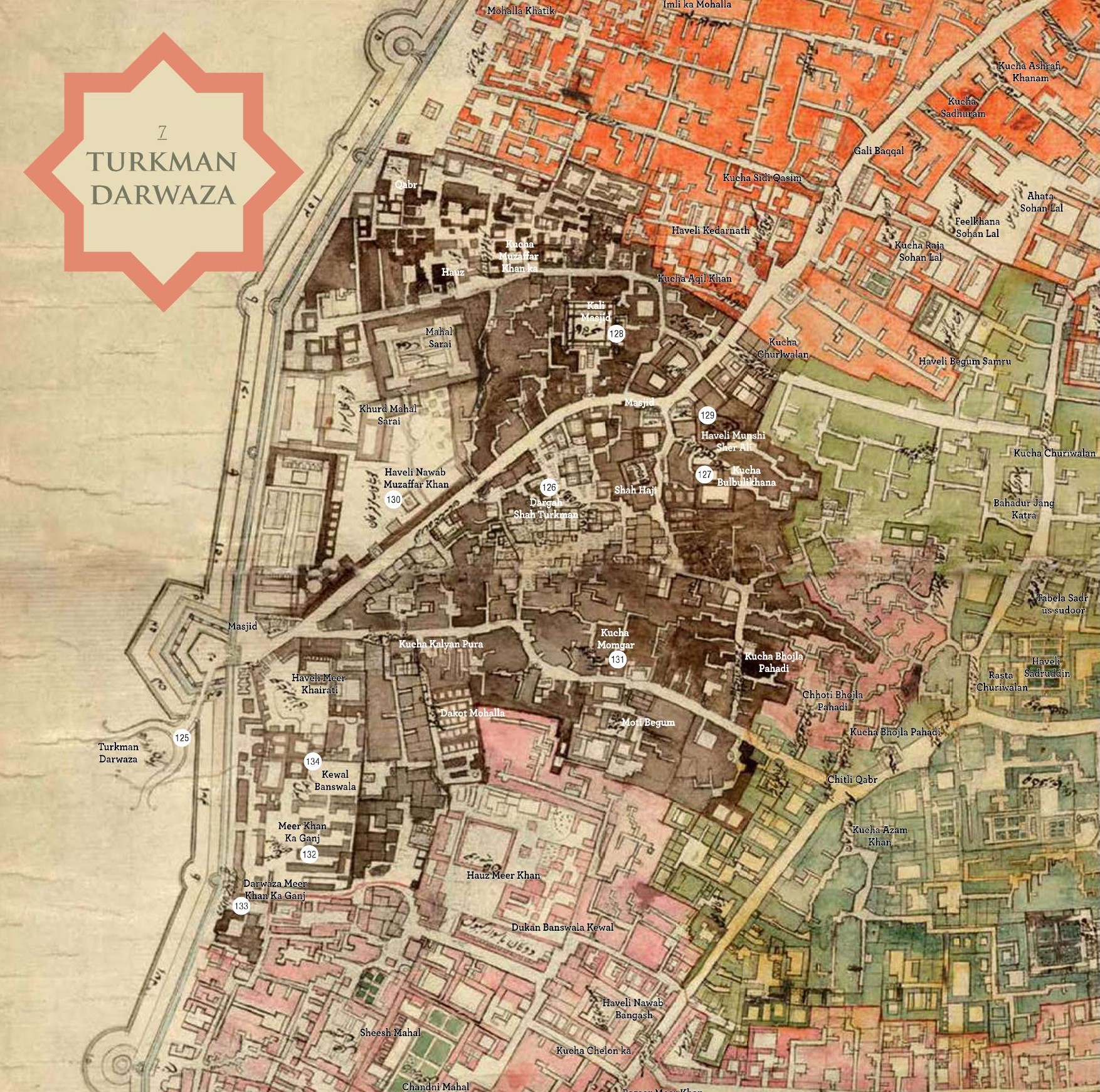
Turkman Darwaza
This rather compact thana, coloured brown in the map, gets its name from the Turkman Darwaza (125), one of the gates piercing the city wall. Though the gate was built in the seventeenth century, along with the wall encircling the city of Shahjahanabad, it was named after a much older shrine in its vicinity. This was the Dargah of Shah Turkman ‘Biyabani’ (126), a Sufi saint who had died in 1240 and was buried here.
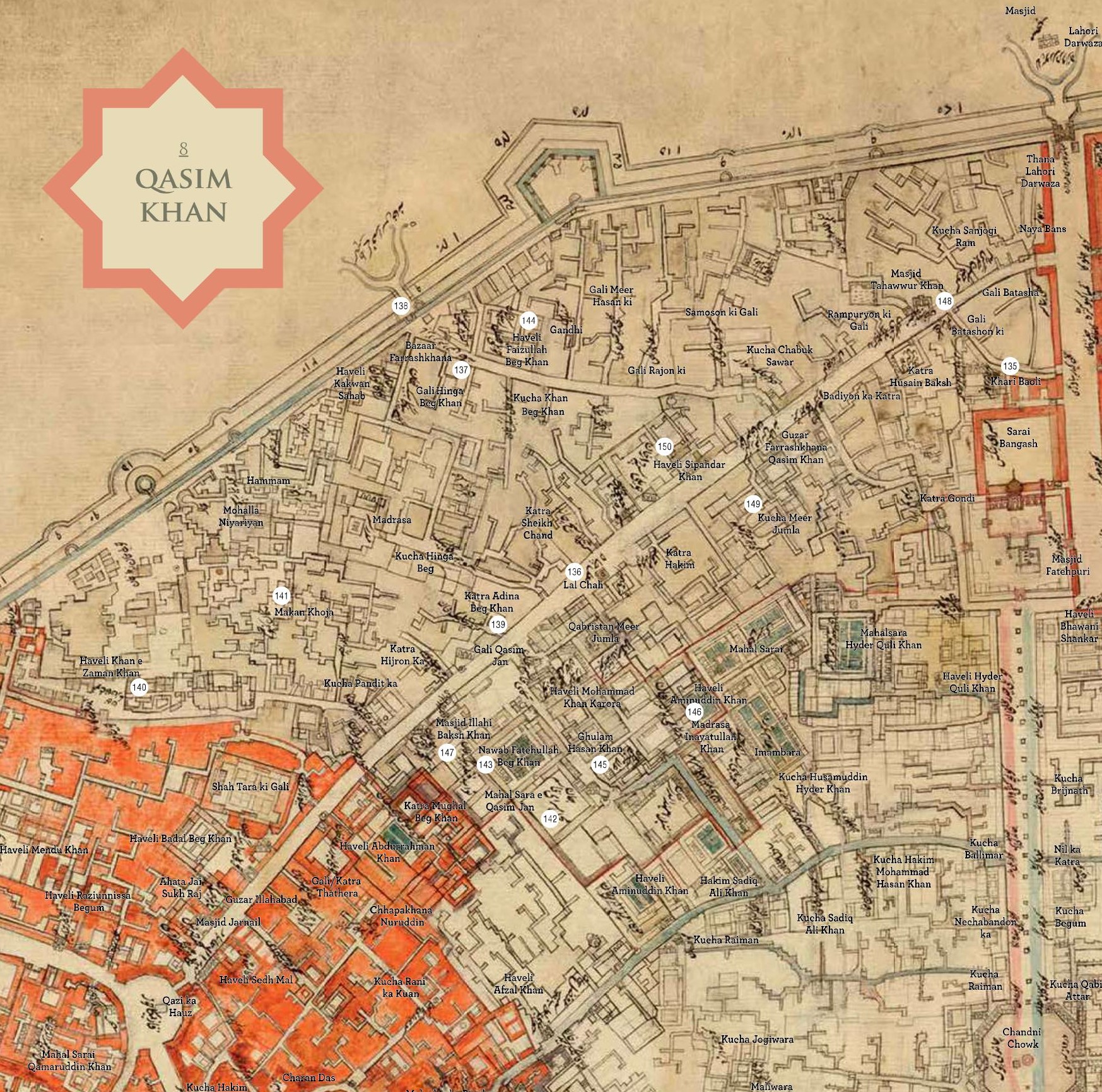
Qasim Khan
The area encompassed in this thana is bisected down the middle by the old alignment of the Grand Trunk Road through Delhi. In the first half of the sixteenth century, the length of this ancient route traversing the Indo-Gangetic plain and beyond, had been repaired by Sher Shah Suri, and various amenities for travellers had been added beside it.
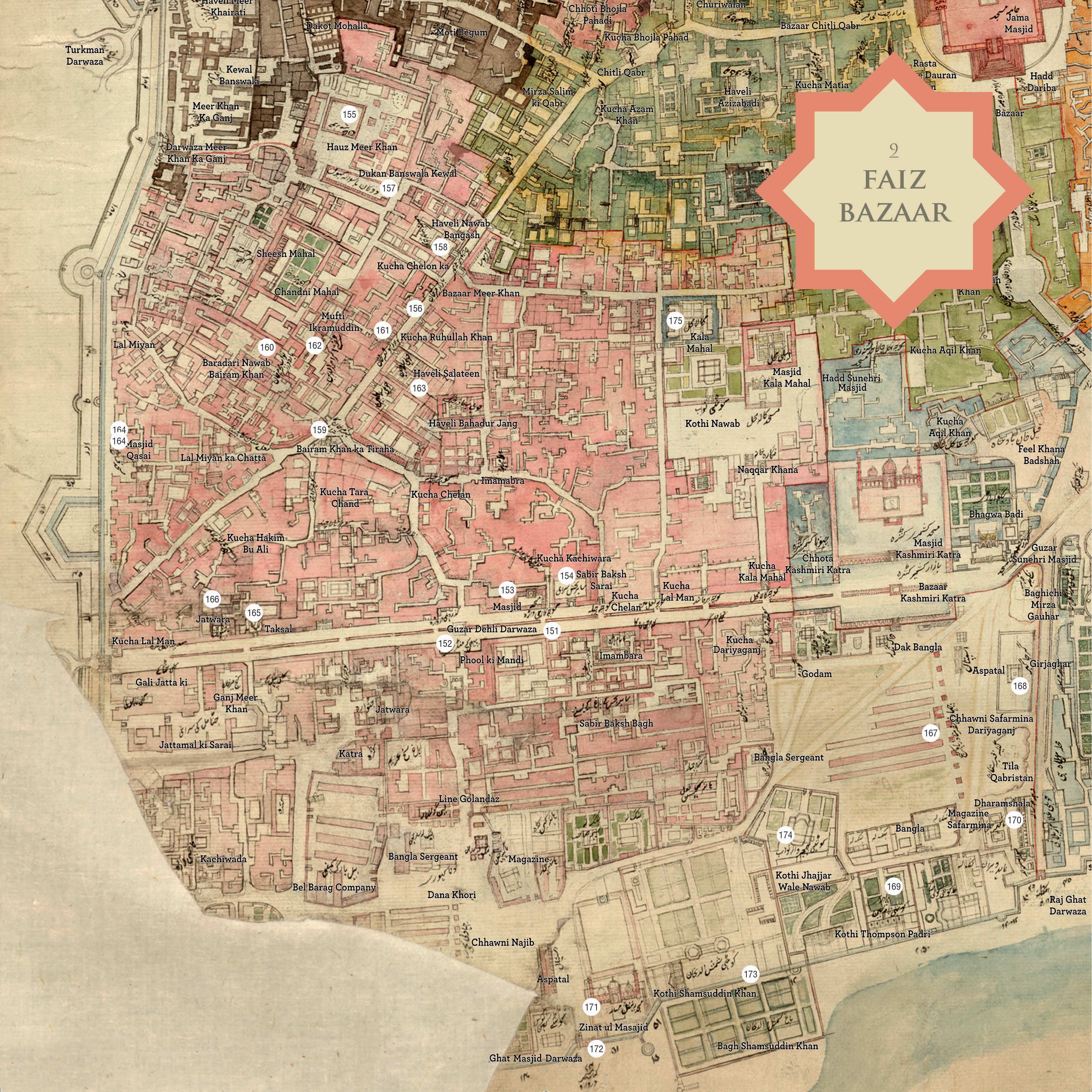
Faiz Bazaar
The area called Faiz Bazaar when this map was made, is now better known to us as Dariyaganj. The thana limits are quite extensive, as it spreads out from just south of the Qila, to the southernmost gate of the city, that is, Dehli Darwaza. Its east to west spread is from the bank of the Yamuna westward to its boundaries with two other thanas – Turkman Darwaza and Bhojla Pahadi.
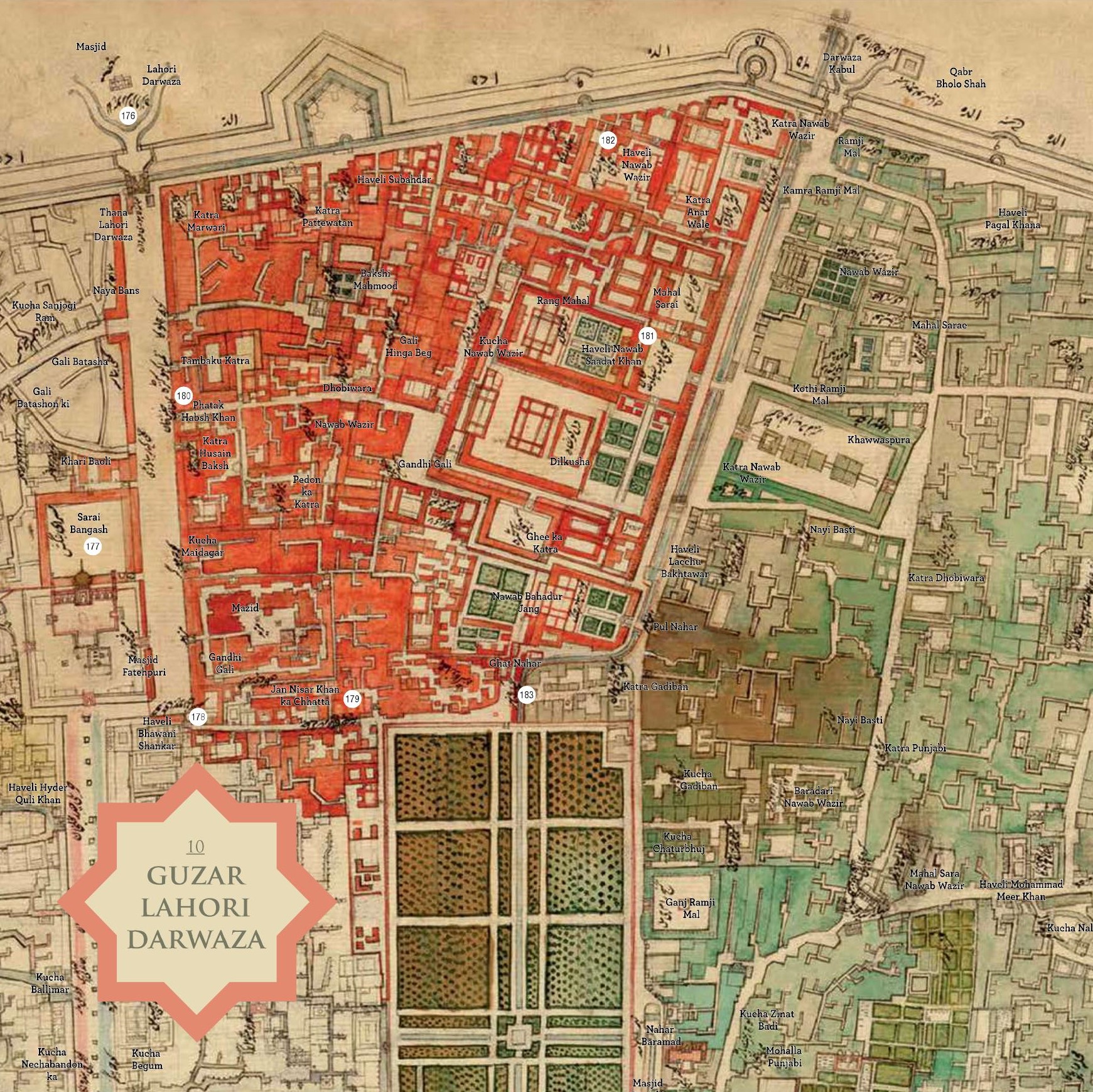
Guzar Lahori Darwaza
The ceremonial avenue running westwards from the Lahori Darwaza of the Qila, stops short in front of the Fatehpuri Masjid. The distance between this place and the Lahori Darwaza (176) of the city, which lay further west, was covered by another, much shorter but almost equally broad street – the Guzar Lahori Darwaza.
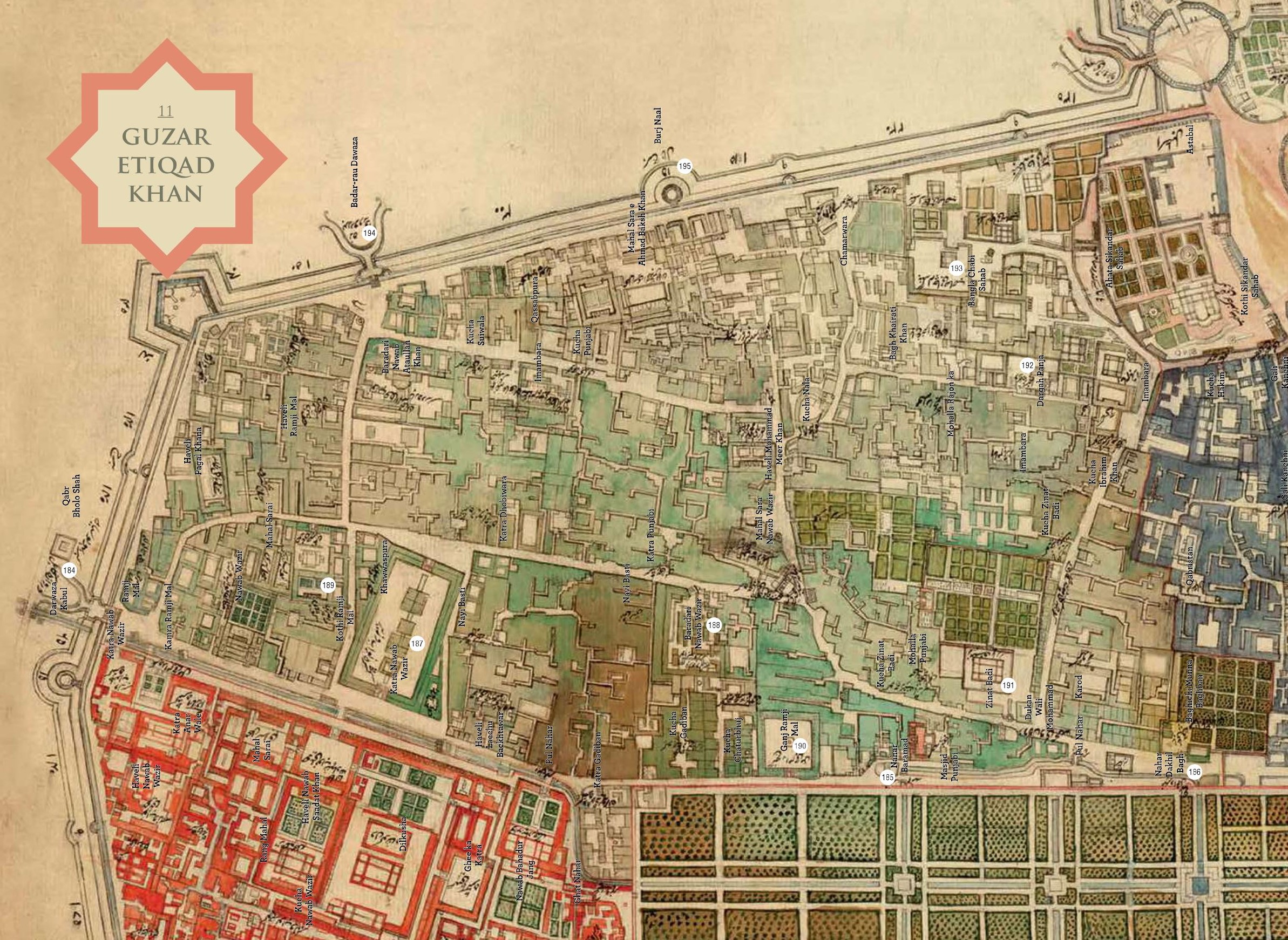
Guzar Etiqad Khan
The thana Etiqad Khan is located in the extreme north-west of the city. It is not clear which Etiqad Khan in Mughal history this was named after, though there was a particular noble of that name during the reign of Farrukhsiyyar, who accumulated a lot of wealth and it is not inconceivable that he might have built up an estate that carried his name more than a hundred years later. The street that borders this thana to the south, runs from the Kabuli Darwaza (184) of the city, eastwards.
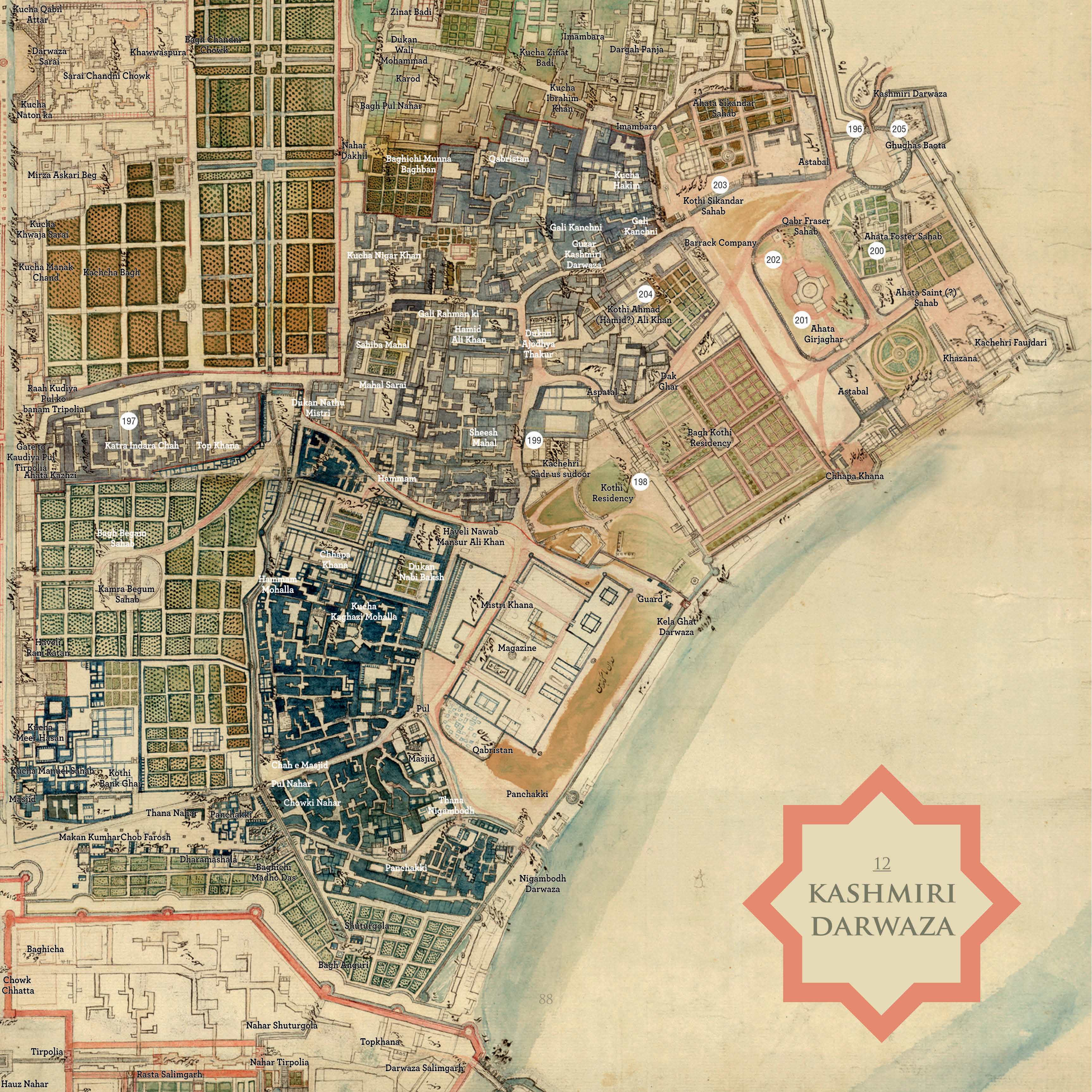
Kashmiri Darwaza
The area covered within these thana limits stretches from near Dariba in the south, all the way to the Kashmiri Darwaza (196), the northernmost gate of the city. The thana can be divided into distinct areas, each with a very different character, from the commercial spaces across from Dariba, to the large mansions overlooking the river in the north. The southern end of the thana is narrow, accessed through a street that opens to the Kotwali Chowk, and is marked in the map as Rah Kaudiya Pul ko, banam Tirpolia, that is, ‘road to Kaudiya Pul, namely Tirpolia’.
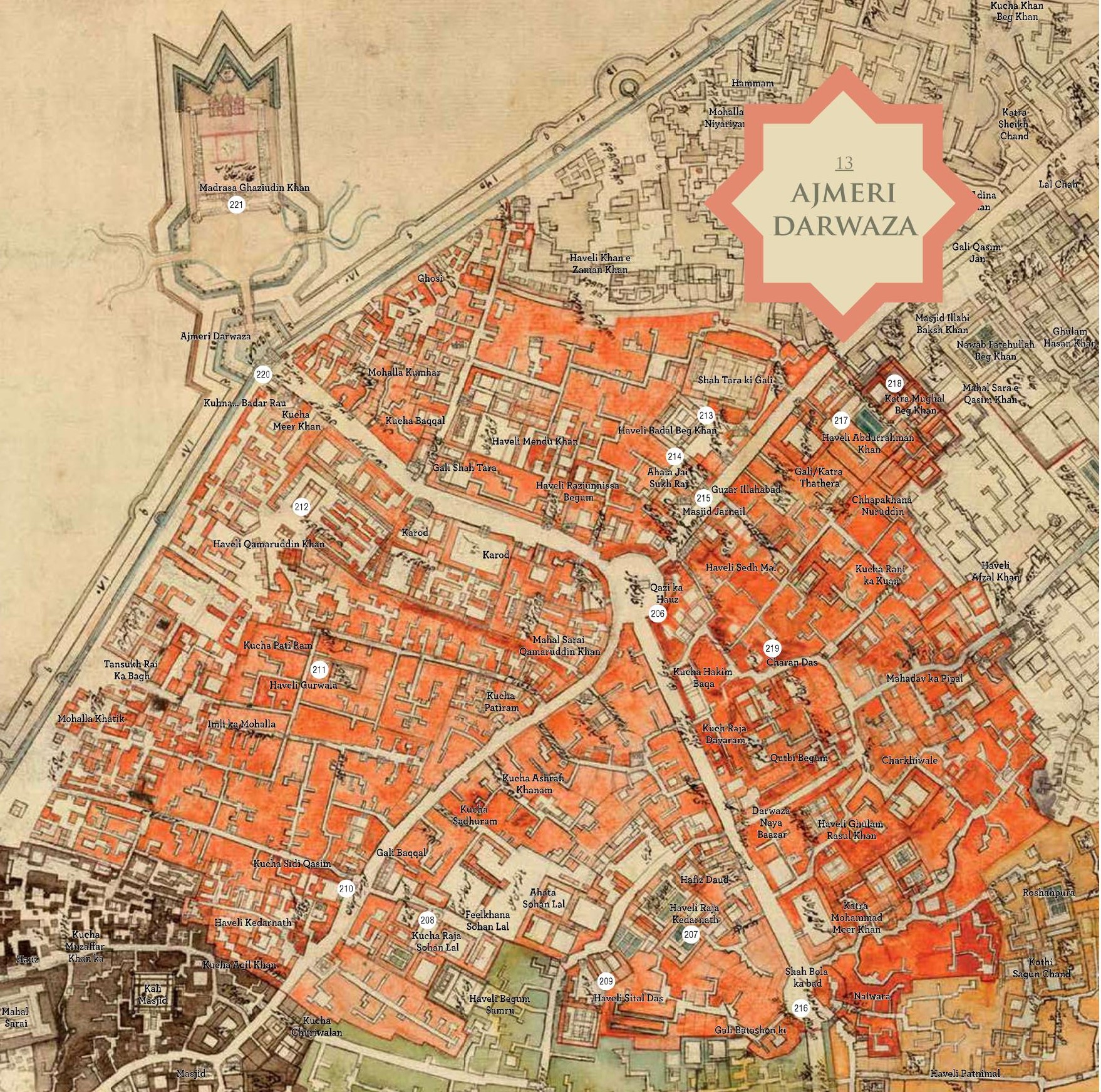
Ajmeri Darwaza
This thana, coloured saffron on the map, gets its name from one of the gates in the city wall – Ajmeri Darwaza. Its primary landmark however, is a crossroads, at the junction of two major arteries. One of these leads from the Jama Masjid to the Ajmeri Darwaza, and the other, from the vicinity of Lahori Darwaza to Turkman Darwaza.

